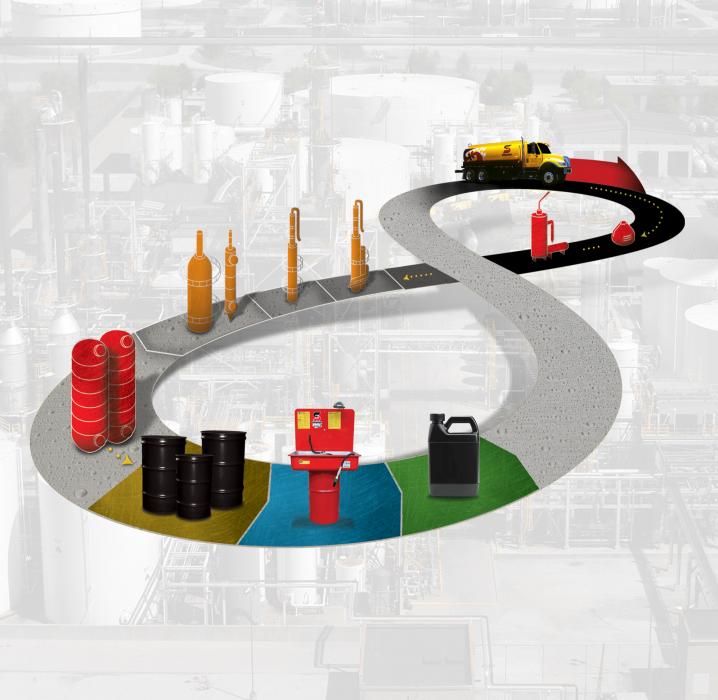Re-Refining Process
1. Used Oil Pick-Up
More than 200 actual million gallons of used oil from auto service centers, fast lubes, car dealerships and factories arrives at our re-refineries each year. Both scheduled and emergency pick up service is available. The trucks deliver the used oil and the recycling process begins.
2. Analytic Testing To Ensure Quality.
Oil from a wide variety of sources may contain chemical or physical contaminants that are hazardous or prevent that oil from being used in the re-refining process. Constant testing ensures that our feed stocks are capable of producing the highest quality end products. Result: premium products and environmentally correct recycling.
3. Dehydration Removes Unwelcome Water.
Water finds its way into many used oil storage areas, so it’s the first thing we remove, using a process of evaporation. The water is collected, treated to be chemically and biologically safe and then discharged.
4. Light End Recovery
Lightweight chemicals are extracted for reuse. With the water removed, the used oil goes to tall recovery towers where glycol and light fuels are separated and collected. By product: glycol is eventually reprocessed as a finished automotive grade product.
5. Fuel Stripping
Heavier fuels are removed for industrial use. The used oil is now subjected to heat and vacuum processes which extract middleweight oils. By product: fuel for industrial heating.
6. Vacuum Distillation
Heavy materials are reclaimed for multiple uses. The heaviest impurities are removed in a complex series of processes. The used oil is actually vaporized in an extreme vacuum and then condensed. Different materials are then separated from the oil. By product: heavy oil for industrial use, such as asphalt extenders, which are made from the heaviest residual material.
7. Hydro Treating Removes Final Impurities
The remaining oil is treated with hydrogen to remove sulfur, nitrogen, chlorine, heavy metals and other impurities. This step also corrects any issues with odor, color and corrosion performance. The purified oil is then separated by weight—cleaner than the day it was first refined and ready to return to the marketplace.
Safety-Kleen's Oil Refining Process
Safety-Kleen’s relentless commitment to quality helps Safety-Kleen provide the highest performing oil products that meet API, SAE and Military specifications.

